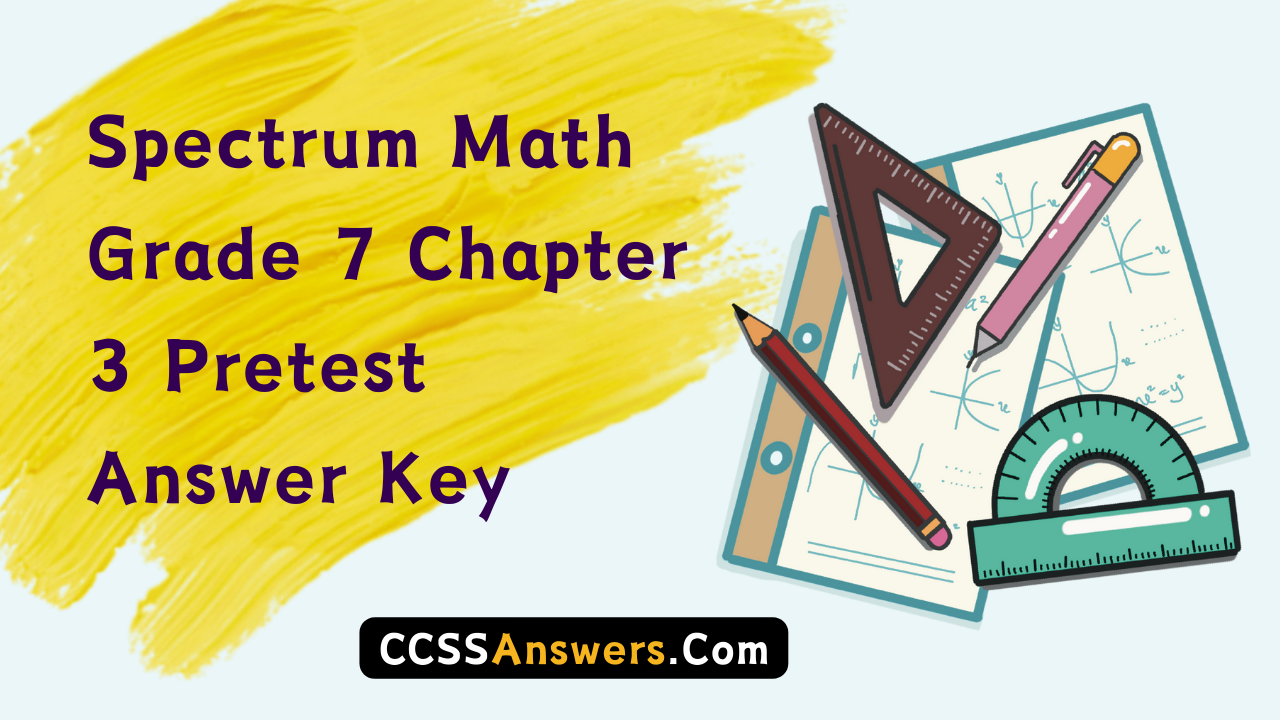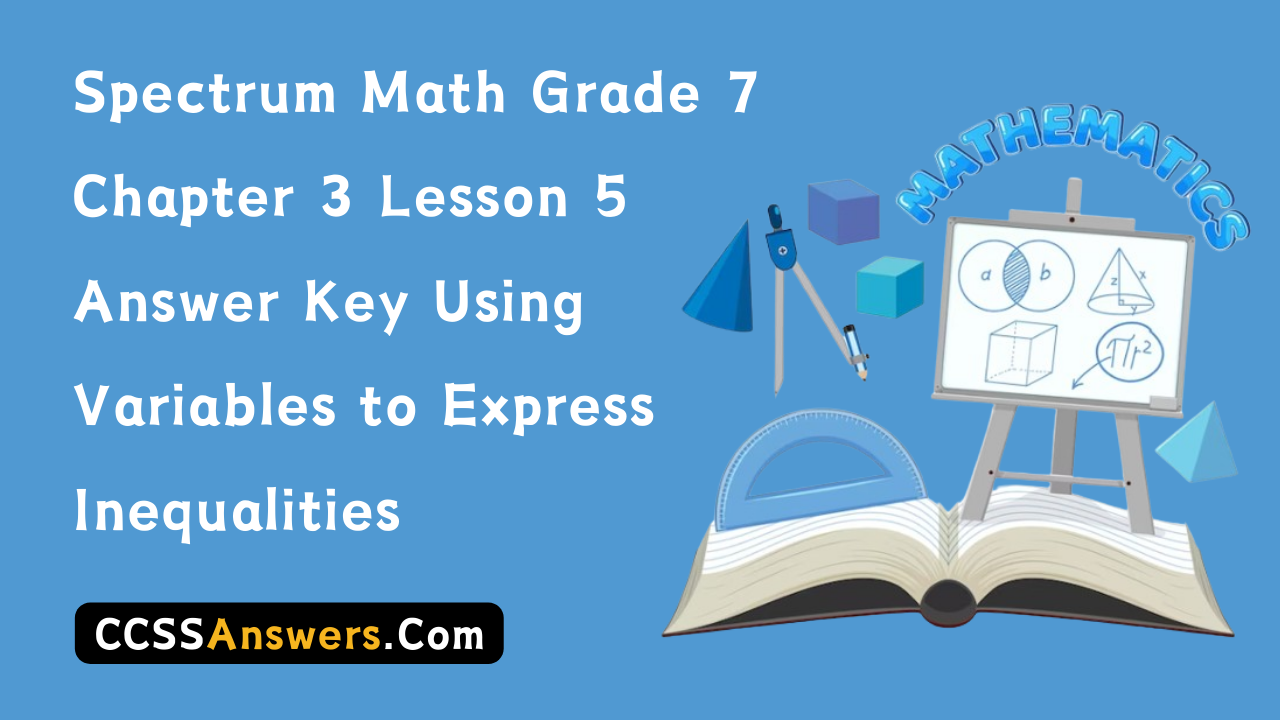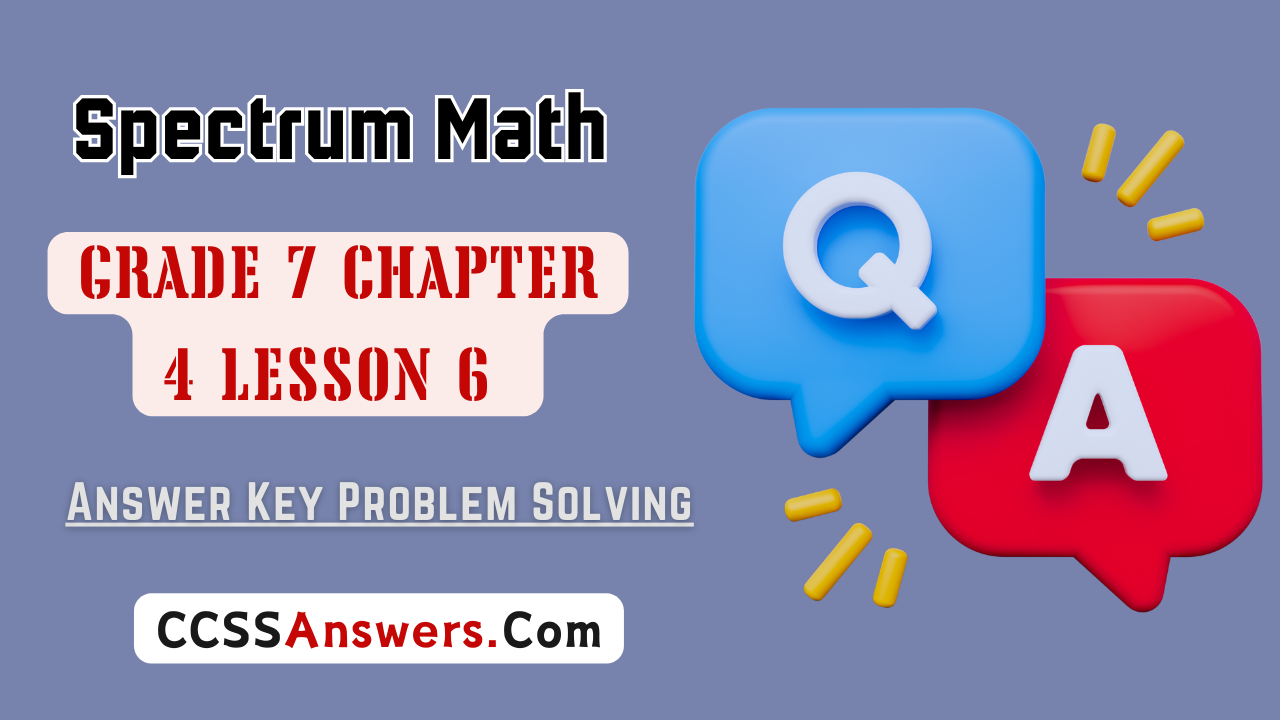Spectrum math grade 7 chapter 3 lesson 4 – Embark on a mathematical adventure with Spectrum Math Grade 7, Chapter 3, Lesson 4! This lesson delves into essential mathematical concepts, problem-solving techniques, and real-world applications, equipping you with the tools to conquer any math challenge that comes your way.
From understanding algebraic expressions to solving equations and exploring geometry, this lesson lays the foundation for mathematical mastery. Get ready to unlock your mathematical potential and discover the beauty of numbers!
Spectrum Math Grade 7, Chapter 3, Lesson 4
Spectrum Math for Grade 7, Chapter 3, Lesson 4 focuses on the topic of Geometry: Area and Volume. This lesson introduces students to the concepts of area and volume, and provides them with the formulas and methods for calculating the area and volume of various geometric shapes.
The key topics covered in this lesson include:
- Definition of area and volume
- Formulas for calculating the area and volume of rectangles, triangles, and circles
- Solving problems involving the area and volume of geometric shapes
2.
Mathematical Concepts

This lesson introduces several fundamental mathematical concepts, including:
Fractions, Decimals, and Percents
The lesson covers the relationships between fractions, decimals, and percents. Students will learn how to convert between these different forms and apply them in real-world situations.
Ratio and Proportion
Students will explore the concept of ratio and proportion, which is the relationship between two or more quantities. They will learn how to set up and solve proportions and use them to solve problems.
Scale Drawings
The lesson introduces the concept of scale drawings, which are representations of real-world objects that have been reduced or enlarged by a certain factor. Students will learn how to create and interpret scale drawings.
Similar Figures, Spectrum math grade 7 chapter 3 lesson 4
Students will also learn about similar figures, which are figures that have the same shape but not necessarily the same size. They will learn how to identify similar figures and use them to solve problems.
Surface Area and Volume
Finally, the lesson introduces the concepts of surface area and volume, which are used to measure the amount of space occupied by a three-dimensional object. Students will learn how to calculate the surface area and volume of different types of objects.
3. Problem-Solving Techniques
This lesson teaches various problem-solving techniques that can be applied to a wide range of math problems.
Step-by-Step Problem-Solving Guide
- Read and understand the problem:Carefully read the problem to comprehend the given information and what is being asked.
- Identify the key information:Highlight or circle important numbers, variables, and relationships mentioned in the problem.
- Devise a plan:Determine which mathematical concepts and techniques are needed to solve the problem.
- Carry out the plan:Use the identified concepts and techniques to solve the problem step-by-step.
- Check your answer:Verify if the solution makes sense and satisfies the conditions of the problem.
Tips for Effective Problem-Solving
- Break down complex problems into smaller, manageable steps.
- Use diagrams, tables, or other visual aids to represent the problem.
- Estimate the answer before solving to check the reasonableness of your solution.
- Practice regularly to improve your problem-solving skills.
4. Real-World Applications
Mathematical concepts covered in this lesson have wide-ranging applications in everyday life and various fields. Understanding these applications is crucial for comprehending the practical relevance of mathematics and its impact on our world.
Everyday Life
- Budgeting:Proportions and ratios help allocate financial resources effectively.
- Cooking:Scaling recipes and measuring ingredients involve understanding fractions and decimals.
- Construction:Geometry principles are used to design and build structures.
Various Fields
- Science:Proportions are used in chemistry to determine concentrations, and geometry in physics to analyze motion.
- Engineering:Calculus is used to optimize designs, and statistics to analyze data.
- Finance:Percentages and interest rates are essential for understanding investments and loans.
Grasping the real-world applications of mathematical concepts empowers individuals to make informed decisions, solve problems effectively, and appreciate the practical significance of mathematics.
Practice and Assessment: Spectrum Math Grade 7 Chapter 3 Lesson 4
This lesson aims to enhance students’ understanding of prime factorization, exponents, and scientific notation. To effectively assess their progress, a combination of practice problems and assessment tools is essential.
Practice Problems
Design a set of practice problems that cover the following concepts:
- Finding prime factors of numbers
- Simplifying expressions with exponents
- Converting numbers to and from scientific notation
Assessment Tool
Create an assessment tool that evaluates students’ understanding of the material, including:
- Multiple-choice questions on prime factorization and exponents
- Short answer questions on scientific notation
- Word problems that require students to apply the concepts to real-world situations
Effective Practice and Assessment Strategies
Provide guidelines for effective practice and assessment strategies, such as:
- Regular practice through homework assignments and class activities
- Providing timely feedback on student work
- Encouraging students to ask questions and seek help when needed
6. Technology Integration
Technology can enhance the teaching and learning of spectrum math in several ways. It can be used to:
- Provide students with interactive simulations and games that can help them to visualize and understand mathematical concepts.
- Allow students to work at their own pace and review material as needed.
- Provide students with access to a variety of resources, such as online videos, tutorials, and worksheets.
There are a number of different software programs and online tools that can be used to support the teaching and learning of spectrum math. Some of the most popular programs include:
- Khan Academy
- IXL Learning
- Mathletics
- Education.com
These programs offer a variety of activities and resources that can be used to supplement the instruction provided in the classroom. They can also be used to provide students with additional practice and support outside of the classroom.While technology can be a valuable tool in the classroom, it is important to use it wisely.
It is important to ensure that technology is used to support the learning objectives of the lesson and that it does not become a distraction. It is also important to provide students with opportunities to practice their math skills without the use of technology.
Benefits of Using Technology in the Classroom
There are a number of benefits to using technology in the classroom. Some of the benefits include:
- Increased student engagement
- Improved student understanding
- Increased student motivation
- Improved student communication
- Improved student collaboration
Challenges of Using Technology in the Classroom
There are also some challenges to using technology in the classroom. Some of the challenges include:
- Cost
- Access
- Training
- Technical problems
It is important to weigh the benefits and challenges of using technology in the classroom before making a decision about whether or not to use it.
Differentiation and Extensions
To meet the needs of diverse learners, it is essential to differentiate instruction. This can be done by providing a variety of learning activities, such as hands-on activities, visual aids, and differentiated assignments. It is also important to provide support for students who need it, such as extra help from the teacher or a peer tutor.
The concepts of this lesson can be extended to more advanced topics, such as algebra and geometry. For example, students can learn about the properties of shapes and how to solve equations. They can also explore related mathematical concepts, such as the Pythagorean theorem and the concept of infinity.
Creativity and Exploration
Encourage students to be creative and explore related mathematical concepts. This can be done by providing them with open-ended problems and allowing them to explore different solutions. Students can also be encouraged to create their own mathematical games and puzzles.
Last Point
In conclusion, Spectrum Math Grade 7, Chapter 3, Lesson 4 empowers you with a solid understanding of fundamental mathematical concepts. Embrace the problem-solving strategies and real-world applications presented in this lesson to become a confident and capable mathematician. Remember, practice makes perfect, so engage in regular practice and seek support when needed.
Mathematics is a journey of exploration and discovery, so embrace the challenges and enjoy the rewards that come with mastering this fascinating subject.
User Queries
What are the key mathematical concepts covered in Spectrum Math Grade 7, Chapter 3, Lesson 4?
This lesson focuses on algebraic expressions, solving equations, and geometry, including concepts like variables, coefficients, and geometric shapes.
How can I effectively solve math problems using the techniques taught in this lesson?
Follow the step-by-step problem-solving strategies Artikeld in the lesson, such as identifying the problem, creating a plan, solving the problem, and checking your answer.
What are some real-world applications of the mathematical concepts learned in this lesson?
These concepts are used in various fields, such as engineering, physics, and economics. For example, solving equations is essential for calculating distances, while geometry is used in architecture and design.


